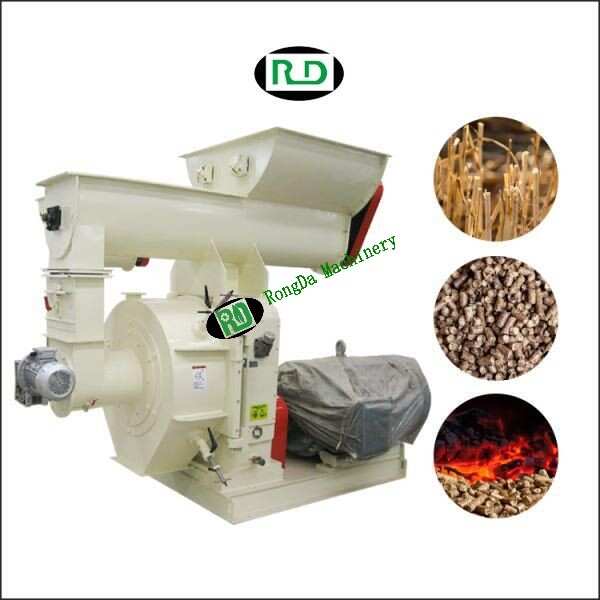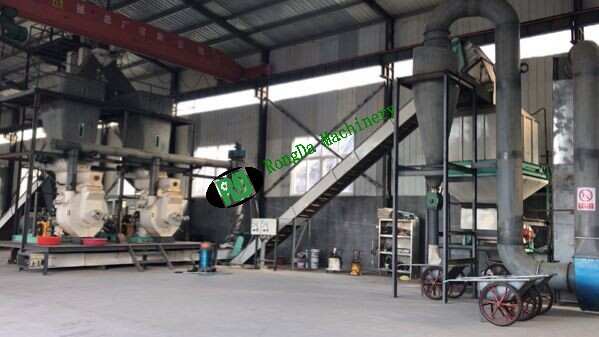Welcome to Rongda Machinery Co., Ltd
Toggle Navigation
In recent years, the global push towards renewable energy has led to increased interest in biomass as a sustainable energy source. Among the various technologies enabling the efficient conversion of biomass into energy, the Biomass Pellet Mill Machine stands out as a revolutionary solution. This machine is designed to turn organic materials such as wood, agricultural waste, and other biomass into highly compact pellets that can be used as a fuel source for heating, electricity generation, and industrial processes. In this article, we will explore the benefits, working principles, and applications of biomass pellet mill machines, highlighting their essential role in the sustainable energy transition.

A Biomass Pellet Mill Machine is an advanced piece of equipment that compresses organic raw materials into small, uniform pellets. These pellets have a higher energy density than raw biomass and are more efficient to transport, store, and burn. Typically made from materials like sawdust, wood chips, straw, leaves, and other plant-based waste, biomass pellets are an environmentally friendly alternative to fossil fuels.
The biomass pellet mill works by feeding raw materials into a die, which uses mechanical pressure to compact the material into cylindrical pellets. The process generates heat due to the friction between the raw materials and the machine components, causing lignin (a natural binding agent in biomass) to melt and help the particles adhere together.
Sustainability: Biomass pellets produced by a pellet mill machine are a renewable energy source. Unlike coal or oil, biomass comes from organic, biodegradable materials that can be replenished annually. This makes biomass pellets a more sustainable option for energy production.
Lower Carbon Emissions: Biomass is considered carbon-neutral. When biomass is burned for energy, it releases the same amount of CO2 that the plants absorbed during their growth. This results in lower overall carbon emissions compared to fossil fuels, contributing to efforts to reduce global warming and air pollution.
Energy Efficiency: The compact size of biomass pellets makes them easier to transport and store compared to raw biomass. The high energy density of pellets ensures that more energy is produced per unit of fuel, reducing the need for large quantities of material to generate the same amount of heat or electricity.
Waste Reduction: The Biomass Pellet Mill Machine helps to reduce agricultural and industrial waste by converting leftovers from wood processing, crop residue, and other organic materials into valuable fuel. This not only helps reduce landfill waste but also provides a profitable way to manage waste products.
Cost-Effectiveness: Once installed, a biomass pellet mill machine can produce a consistent supply of fuel at a lower cost compared to purchasing traditional fuels like coal or natural gas. In addition, biomass pellets are often more cost-effective to store and transport than other forms of fuel.
The working principle behind a Biomass Pellet Mill Machine is relatively straightforward. The machine consists of several components that work together to convert raw biomass into pellets:
Feeding System: Raw biomass material, such as sawdust, wood shavings, or agricultural waste, is fed into the mill via a conveyor or manual loading system. The material is then evenly distributed into the chamber.
Roller and Die System: The key components that form the pellets are the rollers and die. The biomass material is compressed by rotating rollers onto the die, which shapes it into cylindrical pellets. The compression process also generates heat, which causes the natural lignin in the biomass to melt, binding the particles together.
Cooling System: After the pellets are formed, they exit the machine at a high temperature. A cooling system is necessary to lower the temperature of the pellets, making them easier to handle and store without degradation.
Pellet Collection: Finally, the cooled pellets are collected and stored. Some pellet mill machines also have a packing system that ensures the pellets are properly packed for easy transport and sale.
The versatility of the Biomass Pellet Mill Machine means that it can be used across a variety of industries and applications:
Residential Heating: One of the most common uses of biomass pellets is as a heating fuel for homes and small businesses. Pellet stoves and boilers burn biomass pellets to generate heat efficiently and sustainably.
Power Generation: Biomass pellets can be used in power plants to generate electricity. Large-scale facilities can burn biomass pellets in specially designed boilers, providing a renewable alternative to coal and natural gas.
Industrial Use: Industries such as food processing, paper production, and textiles often generate a large amount of organic waste. A Biomass Pellet Mill Machine allows these industries to turn their waste into a valuable energy source, reducing costs and minimizing environmental impact.
Animal Feed: Biomass pellet machines are also used to produce animal feed. Raw materials like alfalfa, grass, and other plant-based ingredients can be pelletized to create nutritious and easy-to-store feed for livestock.
Waste Management: Biomass pellet mills help in the management of agricultural, forestry, and industrial waste. By converting these materials into high-value energy sources, biomass pellet mills help reduce waste accumulation in landfills and contribute to a circular economy.

As the world continues to shift towards more sustainable energy sources, the demand for Biomass Pellet Mill Machines is expected to grow. With advances in technology, these machines are becoming more efficient, producing higher-quality pellets at a lower cost. Additionally, the global push towards carbon neutrality and renewable energy will likely increase the market for biomass pellets, as they become an integral part of the energy mix in many countries.
The role of biomass pellet mills in waste management, energy production, and sustainability cannot be overstated. As governments and businesses alike seek to reduce their carbon footprints and transition to greener energy alternatives, biomass pellet mills are likely to become an even more important tool in achieving these goals.
In conclusion, the Biomass Pellet Mill Machine represents a game-changing innovation in the renewable energy sector. It offers an efficient, sustainable, and cost-effective solution to the growing demand for clean energy sources. By converting biomass waste into high-energy pellets, these machines help reduce waste, lower carbon emissions, and contribute to the global shift towards renewable energy. Whether you're looking to reduce your energy costs, contribute to environmental conservation, or generate income from biomass waste, investing in a biomass pellet mill machine is a step towards a greener, more sustainable future.